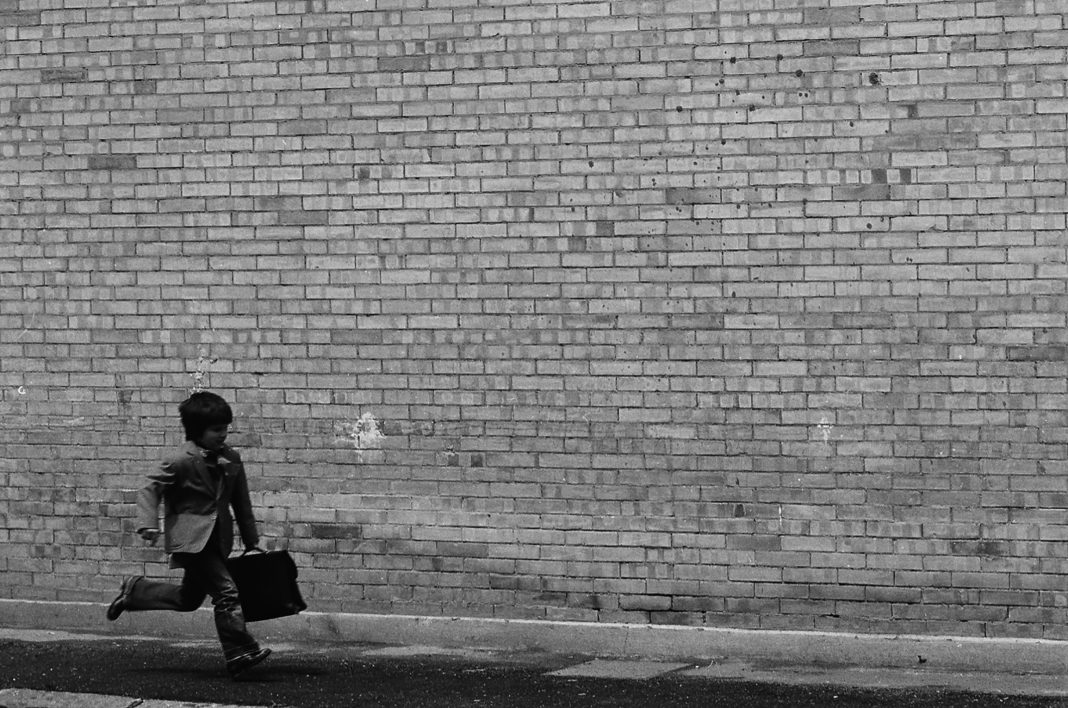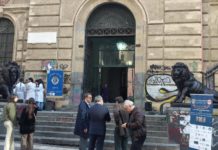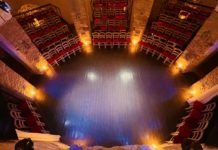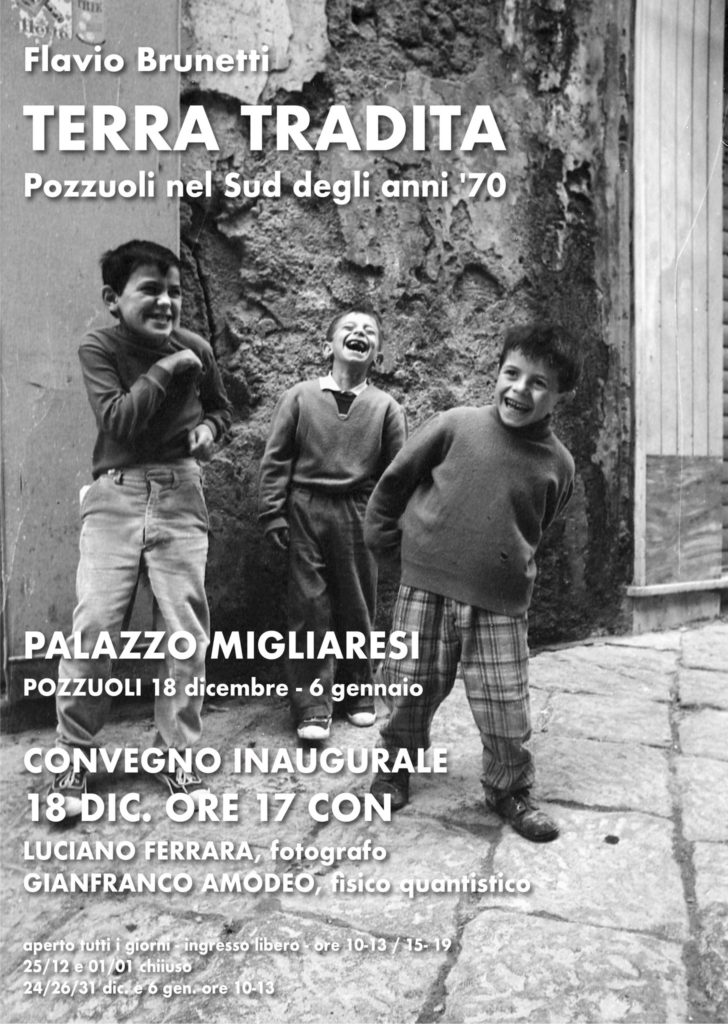
Soffocato dall’aria che respirava a Weimar, bisognoso di quella luce che lì non avrebbe mai trovato, a 37 anni, Goethe, nel 1786, precipitosamente si spinse in Italia in cerca di passione vitale che gli alimentasse l’anima. Vi restò quasi 2 anni, attraversando anche l’incantesimo dei contrasti tra Napoli e i suoi dintorni.
Dal suo viaggio italiano ci viene incontro una gita per mare a Pozzuoli, un breve tratto di strada per terra, passeggiate piacevoli nella contrada la più amena del mondo. Il suolo il più infido, sotto il cielo il più limpido! Acque bollenti, grotte le quali sprigionano vapori zolforosi, monti calcari, decomposti, selvaggi, ostili alla vita delle piante, ed ad onta di ciò, vegetazione rigogliosa quanto si possa vedere dovunque; la vita che trionfa sulla morte…
L’olimpico poeta tedesco sottolinea così la fatica di vivere in un luogo che si specchia nel mito e non è mai uguale a sé stesso, un luogo che emerge in tutta la propria energia umana anche attraverso la mostra proposta da domani, mercoledì 18 dicembre, da Flavio Brunetti con il titolo Terra tradita. Pozzuoli nel Sud degli anni ’70.
Dal suo archivio affiorano trecento foto che raccontano quel periodo tra le condizioni sociali e le infrastrutture assenti; l’Italsider di Bagnoli e i gravi problemi dell’edilizia economica e popolare; la vita sociale di Pozzuoli, il bradisismo e l’evacuazione del Rione Terra.
Non solo i Campi Flegrei, ma anche il Molise: la rivolta nel carcere di Campobasso dei detenuti che rivendicavano condizioni di esistenza più umane, la vita e la miseria nelle zone contadine; le manifestazioni degli studenti per il diritto allo studio, quelle degli operai per la dignità e la difesa del lavoro, e ancora quelle dei disoccupati organizzati che cercano un loro collocazione nella realtà.
In bianco e nero, le immagini fissano la dura vita degli uomini di mare, aspra come quella dei lavoratori della terra; il pianto della morte dei paesi travolti dalle frane e quello per la morte delle persone; il convegno di Bologna contro la repressione, le femministe e gli indiani metropolitani; la mensa dei bambini proletari e il carcere di Adriano Sofri (unica foto che si distingue dalle altre cronologicamente).
Eppure c’è un filo che le accompagna tutte: la capacità di sognare come ci ricordano i reportage pubblicati nel primo volume “Terra Tradita” e nel secondo e “Terra tradita – Gli anni dei sogni e delle tragedie”.
Chimere perdute, speranze ingannate e svanite, emozioni catturate in uno scatto che ritornano, restituendole a chi le osserva oggi. In un confronto con l’autore che viaggia a tutto campo nella creatività, passando dall’apparecchio fotografico al cinema e alla musica con sguardo critico di chi la vita la vuole vivere e non subire. Con la determinazione di partecipare al cambiamento, disseminando sentimenti autentici.
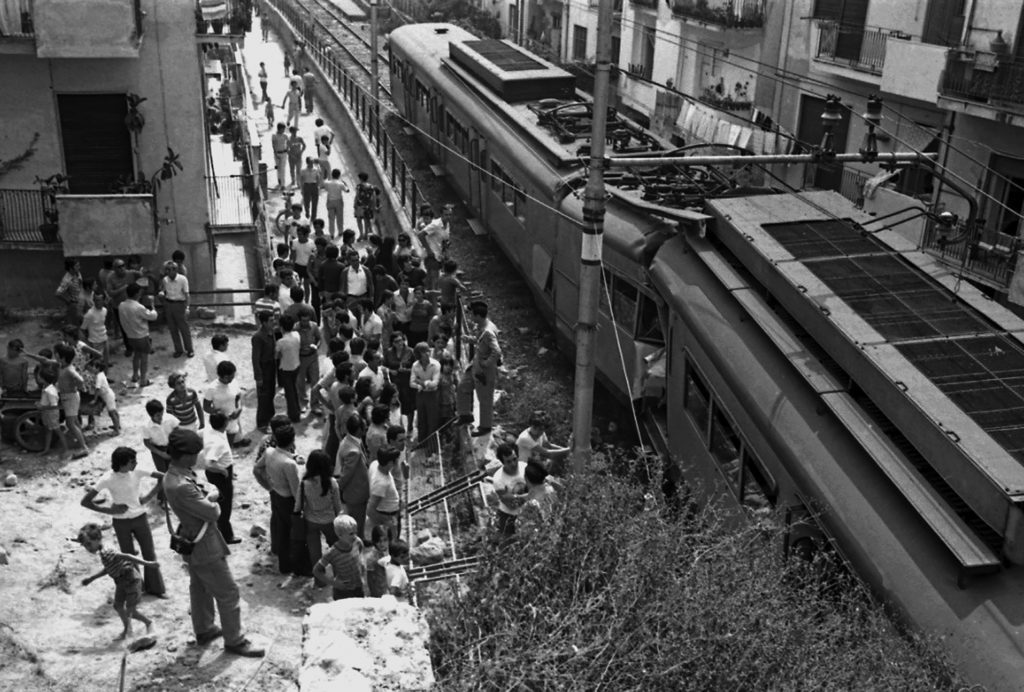
che va a scuola e il manifesto dell’esposizione
The exhibition at Palazzo Migliaresi/Pozzuoli arises from the photographic memory of Flavio Brunetti: the that betrayed land in the Italian south in the 1970s
Suffocated by the air he breathed in Weimar, in need of the light he would never find there, in 1786, at the age of 37, Goethe hurried off to Italy in search of a vital passion to feed his soul. He stayed there for almost two years, fascinated by the contrasts of Naples and its surroundings.
From his Italian journey comes a sea voyage to Pozzuoli, a short stretch of land, pleasant walks in the most pleasant district in the world. The ground is the most treacherous, the sky the clearest! Boiling waters, caves emitting sulphurous fumes, limestone mountains, decomposed, wild, hostile to plant life, and yet the vegetation is as luxuriant as anywhere; life triumphs over death…
In this way, the German poet underlines the weariness of living in a place that is mirrored in myth and is never equal to itself, a place that is also revealed in all its human energy through the exhibition that Flavio Brunetti is proposing from tomorrow, Wednesday 18 December, entitled Terra tradita. Pozzuoli in the South of the 1970s.
Three hundred pictures from his archives tell the story of this period in the midst of social conditions and lack of infrastructure: the Italsider in Bagnoli and the serious problems of economic and social housing; social life in Pozzuoli, bradyseism and the evacuation of Rione Terra.
Not only the Phlegraean Fields, but also Molise: the uprising of the prisoners in Campobasso for more humane living conditions, the life and misery in the rural areas, the demonstrations of the students for the right to study, the demonstrations of the workers for dignity and the defence of work, and again those of the organised unemployed looking for their place in reality.
In black and white, the images capture the hard life of the seamen, as hard as that of the land workers; the mourning of the villages swept away by landslides and the mourning of the dead; the Bologna conference against repression, the feminists and the metropolitan Indians; the canteen of the proletarian children and Adriano Sofri’s prison (the only photo that stands out chronologically from the others).
But there is a common thread running through them all: the ability to dream, as the reportages published in the first volume ‘Terra Tradita’ and in the second and ‘Terra tradita – Gli anni dei sogni e delle tragedie’ remind us.
Lost aspirations, disappointed and vanished hopes, emotions captured in a single shot that return to present themselves to the spectator today. In a confrontation with the author, who traverses the entire spectrum of creativity, moving from the camera to cinema and music with the critical eye of someone who wants to live life and not suffer it. With the determination to be part of the change, to spread authentic feelings.


